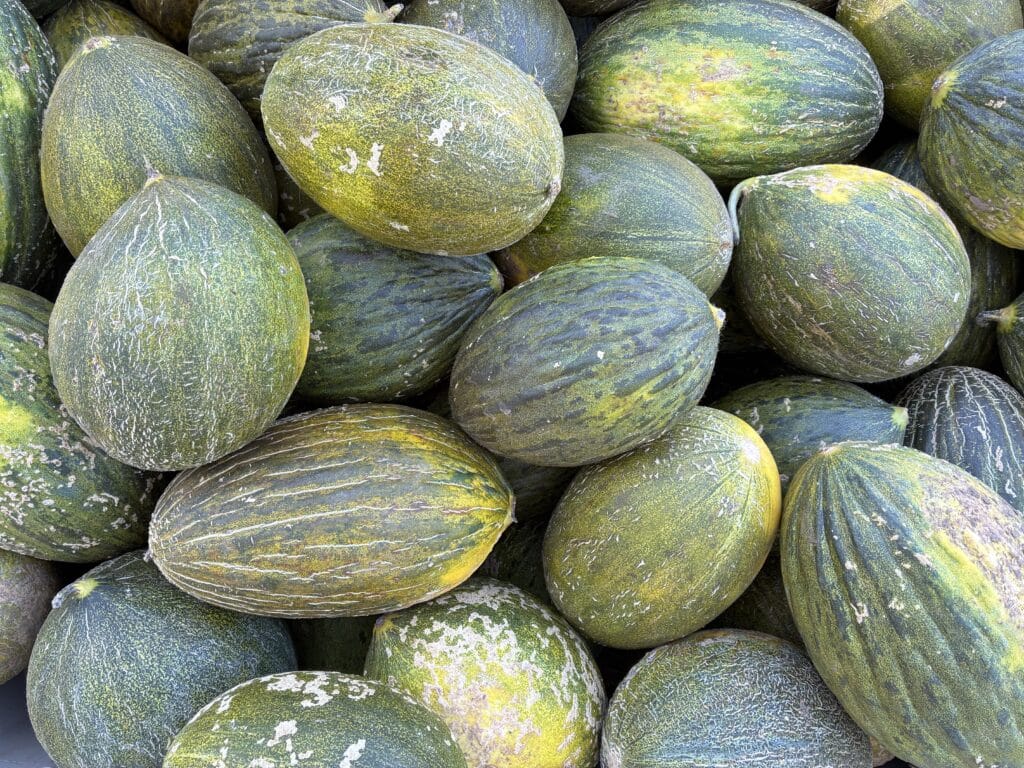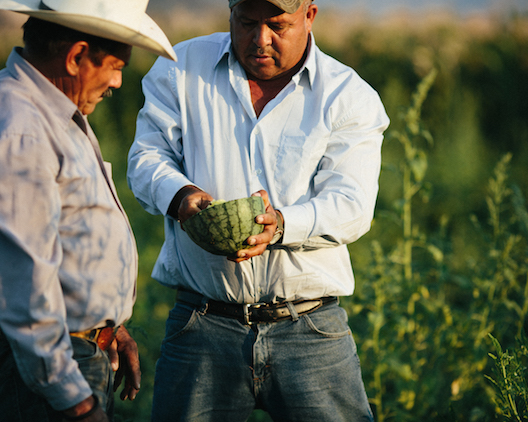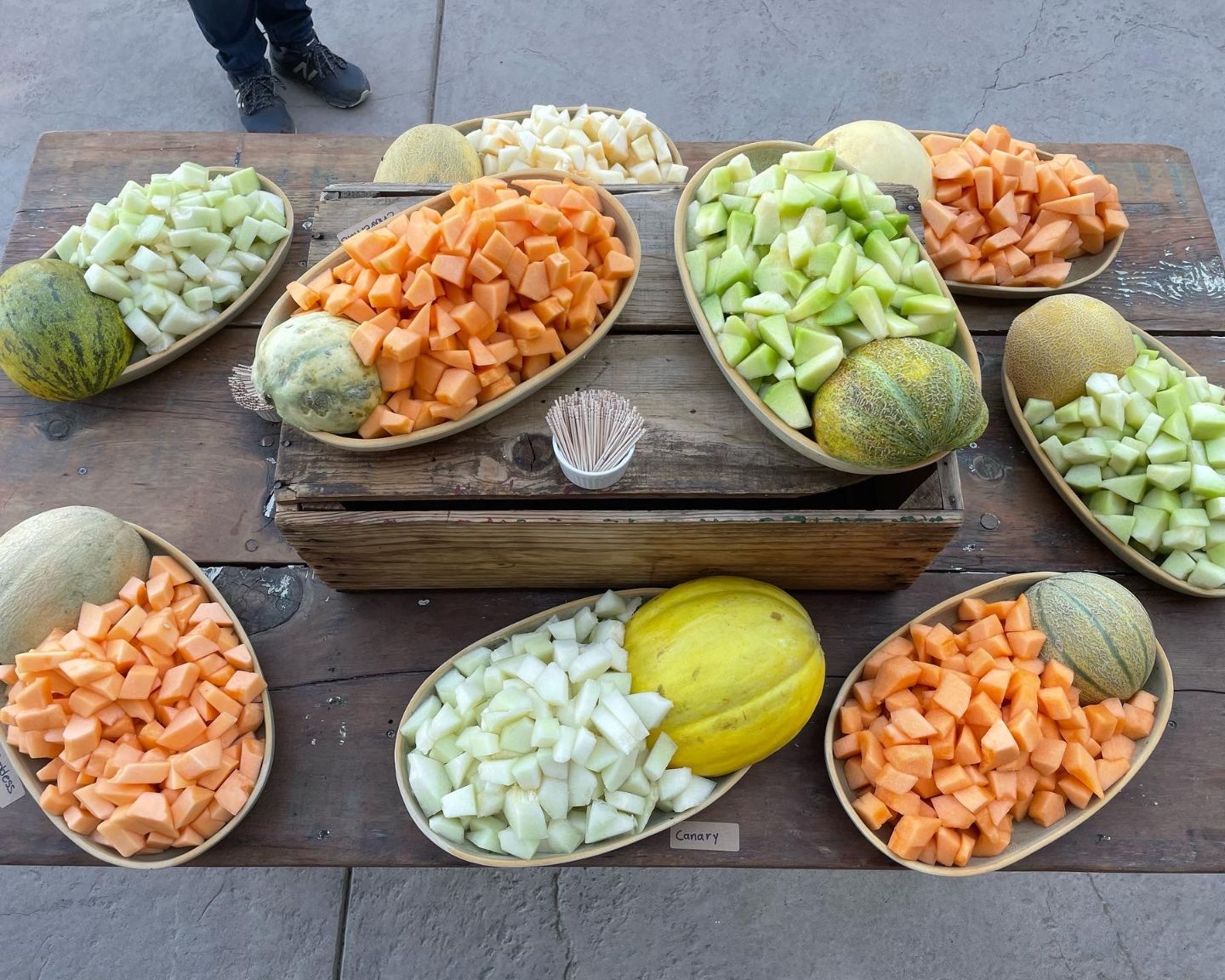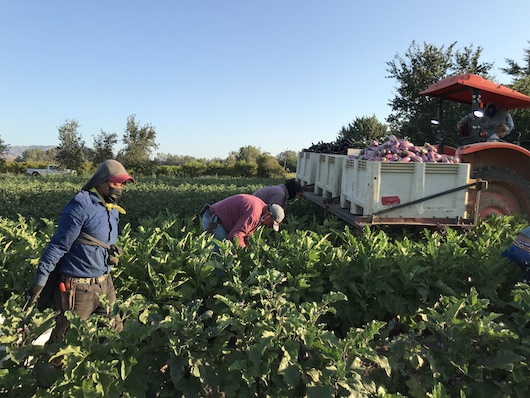
Slicing into a ripe Piel de Sapo melon this morning, I realized that I was a victim of seduction. As with so many of the plant families here, seeds were spilling out of the incision, the fruits are a mere vessel for the “go forth and multiply” maxim of a plant’s directive for sustainability. Inside each of the plump elongated seeds in its melon heart was a whole encyclopedia of heredity, selection, replicability and future potential.
The thousands of seeds in that single melon represent the story of millennia of choosing. The Piel de Sapo (“skin of the toad” in Spanish) is an international favorite grown throughout the world. It is also known as a Santa Claus Melon, Christmas melon, or Croc melon (in Australia), and has a history that dates to Roman times. These melons were brought into southern Spain as early as 300 BCE and were prevalent in Roman horticultural manuals. Piel de Capos were also brought to Spain by the Arabs and were listed in several documents written by Arab botanist and agronomist Ibn Bassal around 1080. Allegedly, the Spanish would say “he who fills his stomach with melons will be filled with light,” and unsurprisingly, these melons became an important crop in this area.
In addition to their amazing taste, these melons are good for us. They are sources of vitamin C (immune system), vitamin A (growth, vision, and cell function), magnesium (nerve function), potassium (heart health and blood pressure), phosphorus (kidney function), calcium (bones and teeth), and other nutrients. What a nutritional bargain!
[Read more…]




